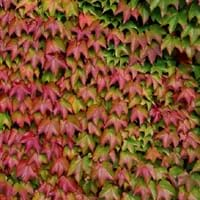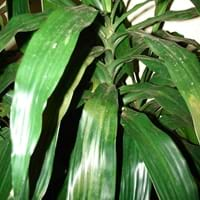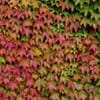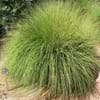Life Span
Perennial
Annual
Type
Vines
Tender Perennial
Origin
United States, Mexico
Africa
Types
Not Available
Not Available
Habitat
Deciduous forests
tropical environments, Well Drained
USDA Hardiness Zone
4-10
10-15
AHS Heat Zone
12 - 1
12-1
Sunset Zone
A1, A2, A3, H1, H2, 1a, 1b, 2a, 2b, 3a, 3b, 4, 5, 6, 7, 8, 9, 10, 11, 12, 13, 14, 15, 16, 17, 18, 19, 20, 21, 22, 23, 24
H2, 21, 23, 24
Habit
Vine/Liana
Upright/Erect
Flower Color Modifier
Bicolor
Bicolor
Fruit Color
Not Available
Orange
Leaf Color in Spring
Green, Dark Green, Sandy Brown, Burgundy
Dark Green
Leaf Color in Summer
Green, Dark Green, Sandy Brown, Burgundy
Dark Green
Leaf Color in Fall
Green, Dark Green, Sandy Brown, Burgundy
Dark Green
Leaf Color in Winter
Light Green
Light Green
Leaf Shape
Maple shaped
Linear
Plant Season
Not Available
Spring, Summer, Fall, Winter
Sunlight
Full Sun, Partial Sun
Full Sun, Partial Sun, Partial shade
Growth Rate
Very Fast
Medium
Type of Soil
Clay, Loam, Sand
Loam, Sand
The pH of Soil
Acidic, Neutral, Alkaline
Acidic, Neutral
Soil Drainage
Well drained
Well drained
Bloom Time
Summer
Late Summer, Early Fall, Fall, Late Fall
Tolerances
Wet Site
Drought
Where to Plant?
Container, Ground
Container, Ground, Pot
How to Plant?
Root Division, Stem Cutting
Rooted stem cutting, Stem Cutting
Plant Maintenance
Medium
Medium
Watering Requirements
Keep the Soil well drained
Do Not over Water, Water Deeply, Water in morning to avoid prompting diseases, Water in the early morning hours
In Summer
Lots of watering
Lots of watering
In Spring
Moderate
Moderate
In Winter
Average Water
Average Water
Soil pH
Neutral
Acidic, Neutral
Soil Type
Well drained
Loam, Sand
Soil Drainage Capacity
Well drained
Well drained
Sun Exposure
Full Sun, Partial shade
Full Sun, Partial Sun, Partial shade
Pruning
Cut off the flower stalks at the base of the plant, Prune after flowering
Cut or pinch the stems, Remove damaged leaves, Remove dead branches, Remove dead leaves, Remove deadheads
Fertilizers
10-10-10 diluted liquid fertilizer, High phosphorus
All-Purpose Liquid Fertilizer, Apply N-P-K, fertilize in growing season
Pests and Diseases
Alternaria Leaf Spot, Blight, Leaf curl
Insects, Leaf spot, Mealybugs, Mites, Red blotch, Root rot
Plant Tolerance
Heat Tolerance, Shade areas
Drought, Humidity, Shade areas
Flowers
Insignificant
Insignificant
Flower Petal Number
Single
Single
Foliage Texture
Fine
Coarse
Foliage Sheen
Matte
Glossy
Attracts
Flea beetles, Insects
Mealybugs, Mites
Allergy
Skin irritation
Not Available
Aesthetic Uses
Decorating walls, Showy Purposes
Beautification, Showy Purposes
Beauty Benefits
Acne, Anti-ageing, Good Cleanser
Not Available
Environmental Uses
Air purification, Very little waste
Air purification
Medicinal Uses
Not Available
Not Available
Part of Plant Used
Leaves, Vines
Not Available
Other Uses
Basketary, Showy Purposes, Used as Ornamental plant
Not Available
Used As Indoor Plant
Yes
Yes
Used As Outdoor Plant
Yes
Yes
Garden Design
Edible, Vegetable
Container, Feature Plant, Foundation, Houseplant, Tropical
Botanical Name
Parthenocissus tricuspidata
DRACAENA fragrans 'Janet Craig'
Common Name
Boston Ivy, Japanese creeper, Grape ivy, Japanese ivy, Woodbine
Corn Plant, Janet Craig Dracaena
In Hindi
Boston Ivy
Janet Craig Dracaena
In German
Dreispitzige Jungfernrebe, Wilder Wein
Janet Craig Dracaena
In French
Winobluszcz trójklapowy
Janet Craig Dracaena
In Spanish
Boston Ivy
Janet Craig Dracaena
In Greek
Boston Ivy
Janet Craig Dracaena
In Portuguese
Boston Ivy
Janet Craig Dracaena
In Polish
Boston Ivy
Janet Craig Dracena
In Latin
Boston Ivy
Johann Peter Dracaena
Phylum
Magnoliophyta
Tracheophyta
Class
Magnoliopsida
Magnoliopsida
Order
Vitales
Asparagales
Family
Vitaceae
Agavaceae
Genus
Parthenocissus
Dracaena
Clade
Angiosperms, Eudicots, Rosids
Angiosperms, Monocots
Tribe
Not Available
Not Available
Subfamily
Not Available
Not Available
Number of Species
Not Available
Importance of Boston Ivy and Janet Craig Dracaena
Want to have the most appropriate plant for your garden? You might want to know the importance of Boston Ivy and Janet Craig Dracaena. Basically, these two plants vary in many aspects. Compare Boston Ivy and Janet Craig Dracaena as they differ in many characteristics such as their life, care, benefits, facts, etc. Every gardener must at least have the slightest clue about the plants he wants to plant in his garden. Compare their benefits, which differ in many ways like facts and uses. The medicinal use of Boston Ivy is Not Available whereas of Janet Craig Dracaena is Not Available. Boston Ivy has beauty benefits as follows: Acne, Anti-ageing and Good Cleanser while Janet Craig Dracaena has beauty benefits as follows: Acne, Anti-ageing and Good Cleanser.
Compare Facts of Boston Ivy vs Janet Craig Dracaena
How to choose the best garden plant for your garden depending upon its facts? Here garden plant comparison will help you to solve this query. Compare the facts of Boston Ivy vs Janet Craig Dracaena and know which one to choose. As garden plants have benefits and other uses, allergy is also a major drawback of plants for some people. Allergic reactions of Boston Ivy are Skin irritation whereas of Janet Craig Dracaena have Not Available respectively. Having a fruit bearing plant in your garden can be a plus point of your garden. Boston Ivy has no showy fruits and Janet Craig Dracaena has no showy fruits. Also Boston Ivy is not flowering and Janet Craig Dracaena is not flowering . You can compare Boston Ivy and Janet Craig Dracaena facts and facts of other plants too.





